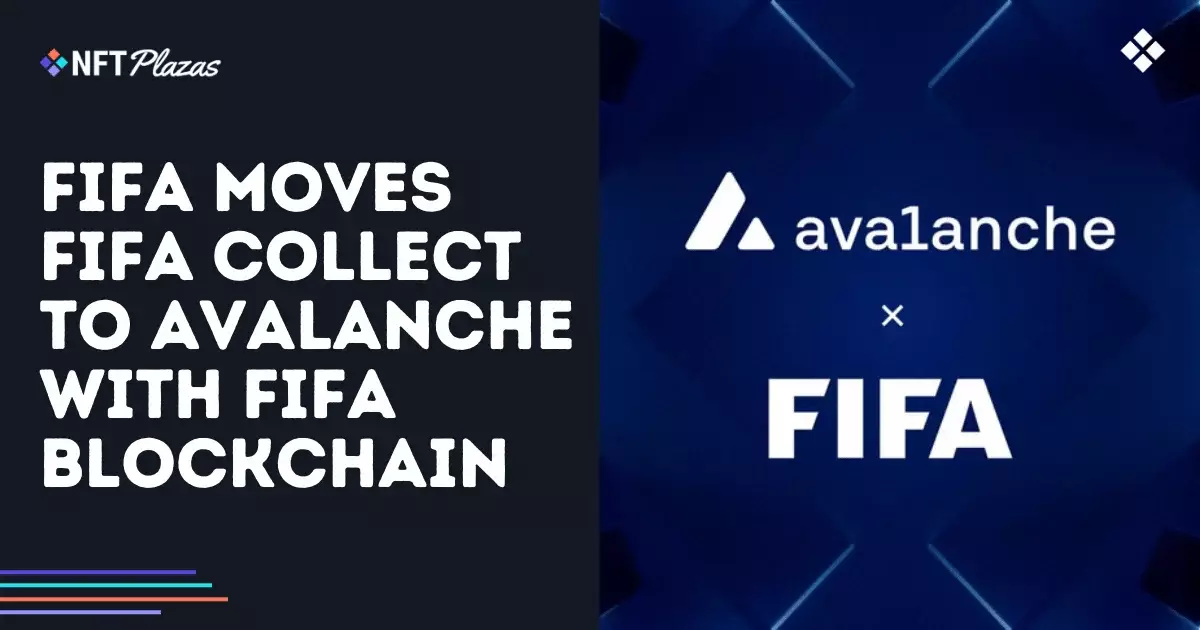In a bold move that reveals both ambition and a pragmatic understanding of market dynamics, FIFA has decided to develop its own custom Layer-1 blockchain in collaboration with Avalanche. This decision comes amidst a transition away from the Algorand blockchain, which has undoubtedly prompted discussions about the future of digital collectibles within the sports arena. However, enthusiasts and skeptics alike must scrutinize this leap into a new technological landscape that promises both opportunities for engagement and pitfalls of fragmentation.
The move to create the “FIFA Blockchain” isn’t merely a technological upgrade; it pierces the heart of how sports organizations view their collectibles and digital assets. FIFA intends to migrate all its current and future NFTs to this new platform. Indeed, we are witnessing how large institutions are now positioning themselves at the intersection of sports and tech, although this pivot raises concerns about user adaptability and infrastructure fragility.
Transitioning Wallets: A User’s Nightmare?
To facilitate this transition, users will be forced to abandon their Algorand-based wallets for Ethereum-compatible options, notably MetaMask. This mandate may alienate die-hard fans who have invested time and money into their current wallets. Such a drastic shift can be likened to uprooting a city to build a modern skyscraper — it may be ambitious, but at what cost? This sudden requirement could very well create friction for users who are not technically savvy enough to navigate this transition smoothly.
Imagine a fan, excited to collect NFTs from their favorite players during FIFA events, suddenly faced with the reality of changing their entire digital wallet ecosystem. The simplicity and user-friendliness that the FIFA Collect platform promised could quickly dissolve into frustration. Moreover, the need for a successful migration places a significant burden on the organization to ensure that all transactions occur seamlessly during this critical period of transition.
Global Engagement: The Promise of Speed and Lower Costs
FIFA’s endorsement of Avalanche centers around the purported benefits of faster transactions and lower fees, intended to enhance global participation in its digital ecosystem. However, this narrative glosses over the potential for technical issues that might arise during peak usage times, such as international tournaments. The massive influx of transactions might stress the new system and counteract the intended benefits.
Moreover, while Avalanche does present a solution with its low transaction costs, organizations must tread carefully. The sports industry cannot ignore the potential impact of declining engagement stemming from user dissatisfaction. The transition aims to alleviate congestion, but any glitches during crucial moments may tarnish FIFA’s reputation as a modern and fan-focused organization.
Future Expansion: Vision or Overreach?
The infrastructure FIFA is developing is ostensibly designed for future applications beyond digital collectibles. While the ambition of expanding functionalities can be applauded, it may instill trepidation regarding the actual implementation of these grand designs. Are FIFA’s leaders genuinely prepared for this leap forward? The complexities involved in managing and developing such a versatile platform could lead to oversights that negatively impact their loyal fan base.
The initial decisions taken around performance, security, and scalability may hold weight now, but they do not guarantee success in the long run. If the platform fails to live up to its promise, then this optimistic vision may devolve into a costly experiment, echoing the disastrous pitfalls faced by other tech-heavy initiatives in recent history.
Thus, as FIFA embarks on this transformative journey, the weight of scrutiny will undoubtedly amplify. The exhilarating intersection of sports and technology holds immense promise, yet an unresolved tension about user experience and platform reliability shadows this evolution. Ultimately, will FIFA’s ambitious foresight breathe new life into global engagement, or will it simply drown in its own complexity?















